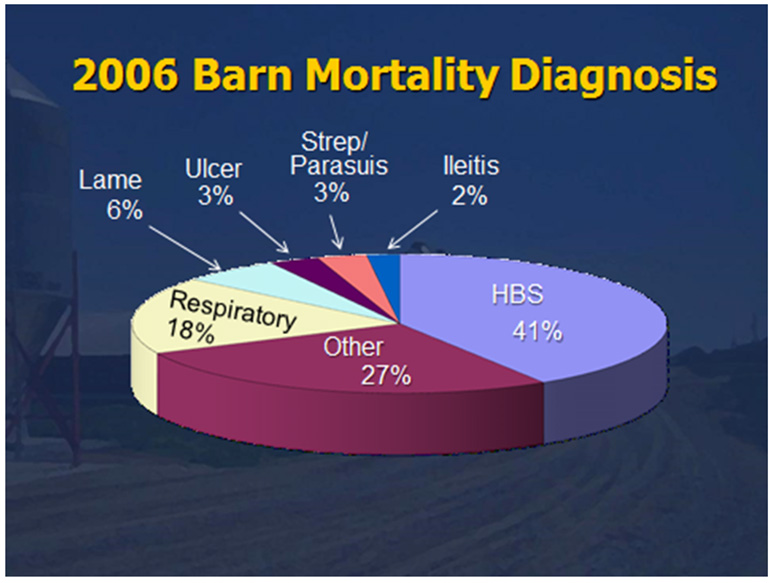Understanding late-finishing mortality
The cost of late mortality is significant in relation to early mortality.
By Aaron J. Lower DVM | Apr 21, 2017
Much of the focus in wean-to-market pig production tends to be on getting weaned pigs placed, started on feed and going. That attention is warranted as we commonly observe early health issues coupled with the stress of getting pigs converted from milk-based to plant-based protein.
In our race to get pigs to town, producers seem to shrug off late-finishing mortality in hopes of just getting to the next group. However, the incremental cost of 1% mortality in late-finishing has far different implications over 1% mortality in the nursery phase.
In 2006 as veterinary students, Clayton Johnson and I completed a cross-sectional finishing mortality project. After 13,000 miles, 25 finishing sites, and 1,000+ dead pigs (mind you, in the Nebraska summer heat), we had two key take homes:
-
- The majority of mortalities in this system in late-finishing were non-infectious (hemorrhagic bowel syndrome and heat stress).
- Barn caregivers were only able to accurately diagnose cause of mortality in 42% of the cases without necropsy.

Figure 1: Pie chart of finishing causes of mortality
Accurate diagnosis of cause of mortality is difficult without performing a necropsy. Some finishing systems have moved to a simple mortality classification system if necropsies are not common.
-
- Acute pigs – general population pigs, not previously identified for treatment.
- Chronic pigs – mortalities that take place in your intensive care or your recovery pens. Also include pigs that are euthanized for sickness.
- Euthanized pigs – pigs that are euthanized for structural defects (lame, rupture, injury, etc.).
The acute mortality bucket in late-finishing is extremely frustrating. Necropsies are needed to understand whether those are infectious drivers or non-infectious drivers. Generally, you will know your system well enough to identify infectious drivers. Infectious drivers of acute mortality would include:
-
- Actinobacillus pleuropneumoniae
- Actinobacillus suis
- Erysipelas
- Ileitis
- Porcine reproductive and respiratory syndrome
- Vegetative endocarditis (chronic strep on heart valves)
- Influenza
Non-infectious drivers are common in late-finishing and generally under diagnosed. Necropsies will help you properly react to late mortality so that you do not over-medicate if non-infectious causes or react too slowly if infectious causes. Common non-infectious causes of late mortality would include:
-
- Hemorrhagic bowel syndrome
- Stress – heat, fighting
- Gastric ulceration
- Out of water event
- Ventilation – manure pumping issues, gas/over heating
- Intestinal strangulation from hernia
- Unknown – typical to have 15% of mortality with no lesions
With weather turning warm, we will start to see a seasonal increase in mortalities. Many farms underestimate the number of heat-stressed pigs that die over the summer. Heat-stressed pigs can be difficult to diagnose. These pigs will generally present slightly pale with a purple streak on the downside. The pig will generally have some white or bloody froth coming out of the nose. When you necropsy these pigs, all internal organs will be normal. The only abnormalities will be lungs that are very wet and heavy with a dark red to purple color. As you cut through the trachea to pull up the lungs you will generally find a bloody froth in the trachea. If these observations are noted and the weather fits, categorize these mortalities in to heat stress as a reason.
The cost of late mortality is significant in relation to early mortality. Your proper identification of mortality reasons helps with judicious antibiotic usage and understanding facility, ventilation, stocking density, nutrition or genetic changes that need to take place if non-infectious causes of mortality are common.
This article is also available at National Hog Farmer (http://www.nationalhogfarmer.com/animal-health/understanding-late-finishing-mortality)
